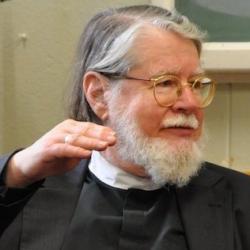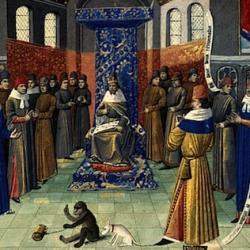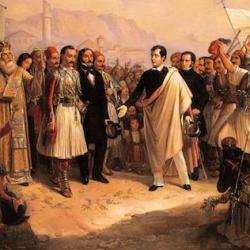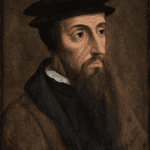Philip Rieff notes, “That word [Kulturkampf] first appeared in common German use in the early 1870s during the struggle of the National Liberal political party to disarm by law the moral/educational authority, and political punditry, of a triumphalist Roman Catholic hierarchy, revitalized as it then was by its dogma of papal infallibility in matters of faith and morals. The aim of the National Liberals was to shift the German Catholic imagination away from the church to the state. The Pope responded to newly restrictive laws by forbidding clerical conformity to them, In turn, the state dismissed clerical resisters from their duties and, moreover, suspended their state salaries” (My Life Among the Deathworks, 75–6).
Already before 1870, German Protestants, liberal in both theology and politics, were defining liberal political theory in anti-Catholic terms. Adolf Diesterweg discerned conflicting Grundprincipien des Lebenskampfes in the struggle between Catholicism and Protestantism. Catholicism stood for absolutism, protective tariffs, guilds, patronage, censorship, a state church, stagnation, and authoritarianism; Protestantism was the ground principle of a liberalism devoted to constitutionalism, the free market, competition, freedom of the press and conscience, progress, and academic freedom (Michael Gross, War Against Catholicism, 102).
The basic opposition was “authority or freedom, Catholicism or Protestantism.” There was no middle ground or muddle; they were irreconcilable opposites arising from the basic religious orientation of the two faiths. Protestantism stood for “rationalism as a method, with the primacy of reason” and opposed the “supernaturalism” of Catholicism, which imprisoned “reason by belief.” Protestant spirituality was “self-determination, spontaneity,” in contrast to “the rule of dark feelings, with passive devotion, blind obedience” (Gross, 103).
Daniel Schenkel agreed: “For Schenkel as for other liberal Protestants, the Catholic attack on Protestant Germany was part of a daring and comprehensive ‘system of power,” an inevitable, enduring, and constant threat: ‘If the Roman Catholic Church behaves aggressively against the Protestant Christians . . . . it is forced to do so,’ he explained, ‘by an inner necessity, because it cannot do otherwise, even if it wanted.’ Establishing a separate society within society, splitting Germans into two separate and irreconcilable populations, the Roman Church demanded that Catholics avoid all religious and civil community with Protestants. The Catholic Church had intruded also into the ‘sacred lap of family life,’ demanding that all children of confessionally mixed marriages be raised Catholic. There was no aspect of life, according to Schenkel, that was now not a matter of confessional allegiance” (Gross, 105). Because it is backward and past-oriented, Catholicism is illiberal; Protestantism, dedicated to progress and the future, is “easily consonant with liberalism.”
Gross argues that “it is important not simply to conflate Protestantism and liberalism after midcentury and to recognize that persistent popular Protestant anti-Catholic culture did not itself define the character of the Kulturkampf. The anti-Catholic fervor of the Protestant religious leadership that added heat to and popularized the campaign against the church was a continuation of the animosity toward Roman Catholicism, the authority of the pope, and missionary proselytizing that was as old as the Reformation of the sixteenth century. Indeed, the Kulturkampf with its coercive legislation represented a fault line over which many Protestant anti-Catholics for religious and confessional reasons were not prepared to step” (126).
Still, Protestant-inspired anti-Catholicism gave fuel to German liberalism. Protestantism helped define liberalism in anti-Catholic, and anti-catholic, terms.















